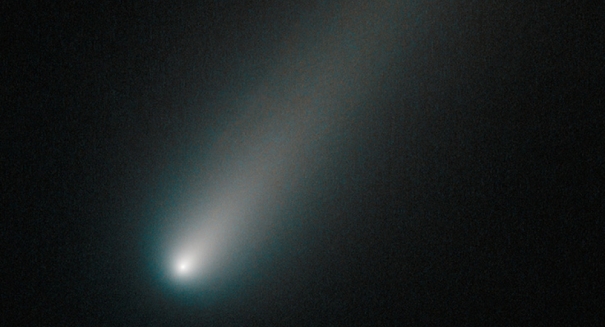
The photo was constructed using two filters.
Based on photographic evidence provided by the Hubble Space Telescope, NASA says that comet ISON is still intact. Will ISON eventually disintegrate or will it survive its close encounter with the sun?
The University of Maryland’s Michael S. Kelly wrote in his blog that “the nucleus may completely crumble into many sub-kilometer-sized pieces, all short-lived.” Of course, he writes, any number of scenarios are possible.
According to NASA, ISON, which was originally billed as the “comet of the century,” will journey closest to the sun on November 28.
NASA says that the comet’s solid nucleus is unresolved in this photograph due to the fact that it is so diminutive. NASA notes, however, that had the nucleus disintegrated, Hubble would have likely found evidence of multiple pieces. In addition, the coma surrounding ISON’s nucleus appears balanced and smooth. If smaller fragment were traveling along, NASA says that the coma would likely not appear this way. Also, the space agency says that a polar jet of dust first detected in Hubble images taken in April is no longer apparent and may have shut off.
The photo was constructed using two filters. ISON’s coma appears to be a greenish-blue color due to gas, while the tail is reddish due to dust moving off the nucleus. The tail forms as dust particles are pushed away from the nucleus by the pressure of sunlight.
The University of Maryland’s Kelly goes on to note that ISON could produce a great show for astronomers or fizzle out like comet Kohoutek in 1973.
ISON will be the closest to Earth on December 28 when it passes within 39.9 million miles.
Leave a Reply